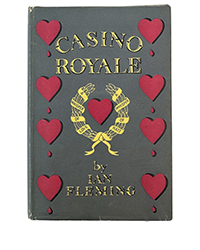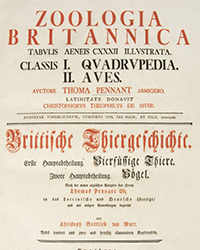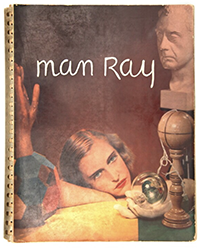Several months ago I ran across an item briefly described as a Sanborn fire atlas. I may have heard of them but didn’t understand what they are. They are interesting highly detailed maps of towns and cities prepared for use by local officials and the fire insurance industry for rating risk and by extension establishing insurance premiums. More recently they have become primary source research material. In the United States they date from the 1860s but came into wide use in the 1880s. According to many dealers with whom I spoke about them they are immediately fascinating and very difficult to sell. The consensus opinion is that they are “too” many things, too recent, too obscure, and too large. The largest of these atlases require two hefty men to place them on a library table and turn their pages – 21.5" by 26.5" on heavy stock. Although they are very local their page counts sometimes run into the hundreds. A mammoth set of San Francisco maps, covering the period 1910 to 1970, shows the footprint of every building in the city in spellbinding detail over roughly 60 years – 1913 to about 1970. This set comprises 11 volumes and more than 1,500 maps and is currently listed by a dealer. This set weighs perhaps 300 pounds and is, it seems, is too much of a good thing for many collectors.
But price aside I don’t see the problem. These maps are of incalculable interest and importance and, it turns out, smart people have been acquiring them for years although it’s all been very quiet. The largest buyer has been the Library of Congress and they have a massive number of these maps, some 750,000 of them. Virtually all are unspeakably rare and shunned by the trade. As a consequence they appear to be unloved but that will change. They are simply too precious and precise to ignore and it turns out the perfect companion to many kinds of ephemera and map collecting.
Let’s begin by looking at what they are.
The Sanborn Company and later, for some decades the Bromley Company, created, for insurance purposes, meticulously detailed maps of American towns and cities to record the size and location of houses and commercial buildings on their lots as shown in local deeds and records. These maps were then created in small numbers and, it turns out, updated infrequently. Towns in the Hudson Valley of New York, with which I have some knowledge, may have had half a dozen versions created over fifty years. In the intervening years the Sanborn and Bromley Companies would send representatives to the clients using these maps to make hand entries and adjustments to reflect changes in the city rolls. To be readable and understandable these maps were created in the scale of 1-inch equals 50 feet. For local precision this was ideal.
To understand this scale a world map portraying the 25,000 mile circumference of the earth would be 220,000 feet wide. This is intense local mapping intended to both place buildings on their lots and precisely identify the shape, however irregular, of the building. It’s very impressive record keeping. It is also a powerful hook for anyone, be they institutions, interested parties or collectors to link documents, photographs, and artwork to specific addresses and specific dates, in effect creating local and personal history into which the boundless ephemera that is flowing onto eBay and into the exhibition booths of dealers at shows can be contextualized and understood in the broad sweep of history. It is in effect magic.
Large-scale scanners can convert these maps into digitized images but these maps, while very accurate, because of their scale should be fitted together to make larger maps of areas and sections. To do this each map will need to be fitted into the earth’s true coordinates and the dimensions of each map then microscopically adjusted to make these images come together as random pieces of a larger puzzle. It’s doable.
Continuing revisions to these old maps could then be captured as layers.
Within these layers a family’s home ownership and their years of residence could be added. Family pictures could be linked as well. Connections to local schools and employers noted. The color of residents could be adduced and the shifting racial boundaries seen adjusting almost in real time by shifting the time line forward or back.
It has been inevitable that there will be an ambitious project to map history. These insurance maps give us a way to incorporate the human history of America into a comprehensible story, one in which almost all Americans will find a place in it for them and theirs.
History is extraordinarily inaccurate, often the privilege of the winners to write and impose their version on those boxing on the undercards. This project will rewrite the history of America and in so doing become an extraordinary teaching tool that brings libraries, historical societies, communities and educational institutions together in common cause to contextualize the lives and experiences of millions of Americans in the story.
These maps also have the potential to be electronically turned on their sides to show images of these places and the people who lived, played, worked, worshiped and died there - to permit personal stories to emerge - from the underlying facts - and bring such places and eras to life again, to see what granddad saw, the parades that marched by and the movies playing at the Arcade.
As for the impact on the ephemera field this will be an extraordinary moment. The gathering and collecting of old and random information, probably some billion pieces of it, will begin to fit into a clear and understandable structure for which these maps are simply the first step. There will be fresh reasons to save ephemera, reasons to share it, and robust markets in time to redistribute it.
It would be remarkable, truly remarkable and it should happen. People deserve it and frankly dealers need it.
As to who may take this on certainly Google is logical. Yahoo too could handle it. Ancestry.com would gain immeasurably and eBay could make it a major business. But it may also simply rise of its will, the thirst for connection is never fully quenched.
So it will happen, perhaps not now or even soon, but certainly, absolutely certainly some day.
The maps that illustrate this article are from a Kingston-Rondout Sanborn Atlas created in 1887. Each map is actually 21.5" x 26.5". Click on any map to enlarge it.





![<b>Sotheby’s:</b> Ernest Hemingway. <i>Three Stories And Ten Poems,</i> [Paris], (1923). First edition of Hemingway’s first published book. $75,000. Sotheby’s: Ernest Hemingway. Three Stories And Ten Poems, [Paris], (1923). First edition of Hemingway’s first published book. $75,000.](https://ae-files.s3.amazonaws.com/AdvertisementPhotos/acf970a0-a15d-4c79-aa24-5e8e414cb465.png)




